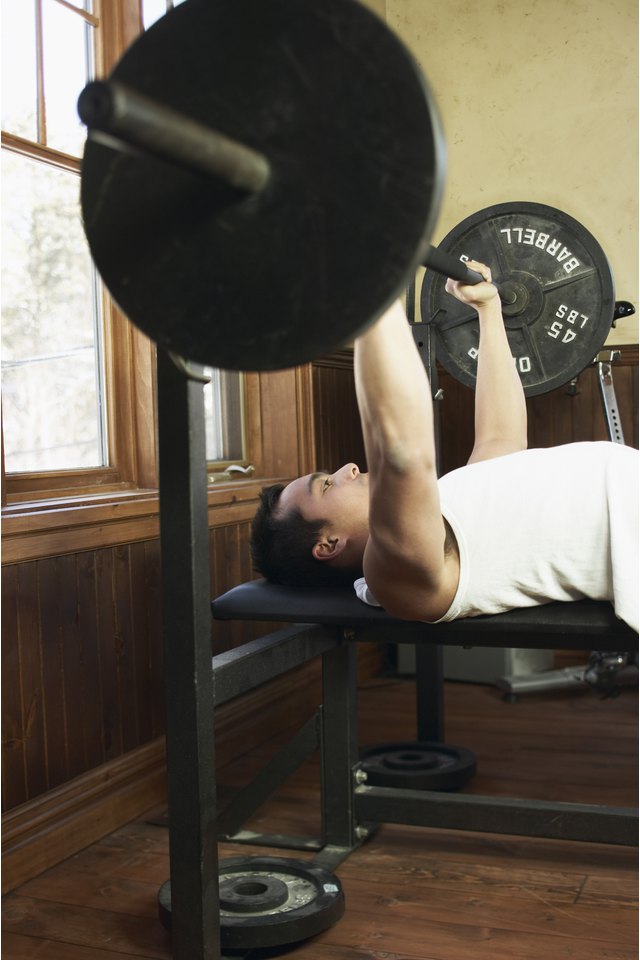The Muscle Groups Used in Bench Press Exercises

Although typically considered a chest exercise, the bench press works several muscles in the upper body, including the pectoralis major, deltoids and triceps. The exact muscles worked depend on the style of bench press you do -- incline, decline or flat. You can use a cable machine, barbell, Smith machine or dumbbells to perform the bench press exercise. Check with your doctor before beginning any exercise program, and consult with a qualified professional and learn proper bench pressing form to reduce your risk of injury. Start with light weights and gradually increase the weight over time as you become stronger.
Sternal Head of the Chest Muscle
The pectoralis major, or main chest muscle, consists of two heads. Although you cannot completely separate the contractions of each head, you can emphasize one more than the other. The sternal head makes up the large, most visible part of the chest muscle. It attaches to the sternum and ribs in the middle of your chest, extends out to both sides and attaches to the humerus, or upper arm bone, on the other end. All versions of the bench press work the sternal head of the chest muscle; flat and decline presses emphasize the sternal head over the clavicular head.
Clavicular Head of the Chest Muscle
The clavicular head of the chest muscle is significantly smaller than -- and sits above -- the sternal head. It attaches to the clavicle near the middle of your chest, extends out and down and attaches to the humerus at the other end. The incline bench press exercise emphasizes the clavicular head of the chest muscle. The American Council on Exercise, a nonprofit fitness organization, recommends inclining the bench between 45 and 60 degrees. If you incline the bench too high, you turn the exercise into an overhead shoulder press, placing more emphasis on the shoulders and removing tension from the chest. Performing a flat bench press with a reverse grip -- your knuckles point toward your feet -- also emphasizes the upper part of your chest more than the lower portion.
Deltoids
The three major heads of the deltoids, or shoulder muscles, are the posterior, anterior and medial heads. The bench press mainly works the anterior deltoid, which is on the front of the shoulder. The posterior deltoid, on the back of the shoulder, and the medial deltoid, on the side of the shoulder, assist in the bench press exercise. The more you incline the bench, the more the anterior deltoids are involved in the exercise.
Triceps
Your triceps, the muscles on the back of your upper arm, are involved to some extent in all bench press exercises. You can adjust the amount of triceps involvement by changing the width of your grip. If your hands are shoulder-width apart or closer, you increase the involvement of your triceps. If you take a wider than shoulder-width grip, you decrease the involvement of your triceps.
References
Writer Bio
Based in Austin, Texas, Jolie Johnson has been in the fitness industry for over 12 years and has been writing fitness-related articles since 2008 for various websites. She received her Bachelor of Arts in English and philosophy from the University of Illinois.
